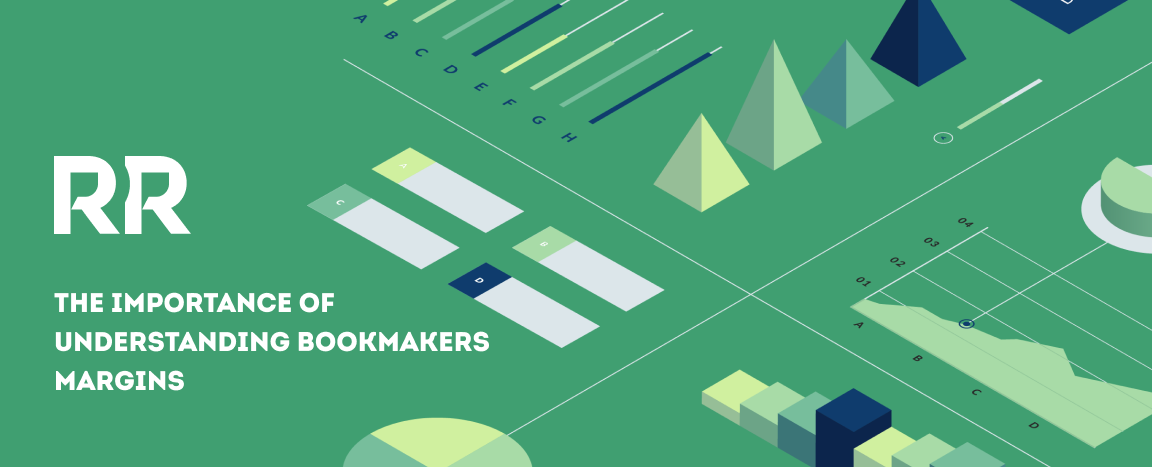
When you bet on an event, the bookmaker will offer you odds on the possible outcomes. This is an important process for the bookmaker and probability plays a big part. They will study the event and look at the probability of each outcome happening. However, they are in business to make money and this is where bookmakers margins come into play.
Setting the Margin
An easy way to explain this is to look at the odds that could be offered on the toss of a coin. There are only two possible results here, it’s either going to end up heads or tails. This means the probability of each result is 50%. A bookmaker will offer odds on the result that will allow them to make a profit.
There’s little point in offering odds of 2.0 on either result. It’s 50/50 so after 100 tosses, 50 are likely to be heads, 50 tails. If someone always goes for heads, they will get 50 wins and 50 losses and be level.
If, however, the bookmakers 1.9 for each option, it’s a different story. If you stake £10 on each toss of the coin, 50 wins would see you receive £45 but 50 losses cost you £50. The bookmaker therefore will make a profit in these circumstances.
If the bookmaker was to reduce the odds to 1.8 for each result, their profit margin will be increasing. That may be good news for the bookmaker but then again, it’s not. Who is going to take those odds of 1.8 on a toss of a coin? You will need to get more winning bets and at 50/50 that might not happen.
Lower Margins equal Better Odds
It’s important to look at the long-term when discussing this subject. Over a few tosses of the coin, a player might make a profit but the more tosses there are, the better the chance that the bookmaker with their margin will make the profit they so desire making.
It’s possible to place a bet on who wins the toss of a coin in some sporting events, notably cricket. But it’s not a bet that you are going to be placing a large number of times. Placing a bet on a football match is a much more common occurrence. Let’s look at how betting margins work in this type of bet.
If there’s a game being played where Leicester City host Manchester United, the bookmaker may decide that a home win is 2.0, a draw 3.0 and an away victory 6.0. Those odds equal a total book of 100% but the bookmaker will reduce those odds slightly to give them a profit. They may well offer odds of 1.66 for the home win, 2.5 for the draw and 5.0 for the away win. If you calculate the probabilities for each of those results, they now total more than 100% and the margin has been created.
Make Sure you know the Margin

It’s important to work out what the profit margin is because there are betting systems that can be employed to get some winnings. This includes matched betting which includes the use of free bets that are given by bookmakers. Using betting exchanges, it is possible to calculate just how much needs can be wagered to cover all the possible outcomes. Bookmakers aren’t too keen on this though and can suspend accounts.
There are instances where the bookmaker sets odds that give them a margin, but the bets made by their customers isn’t in agreement with their calculations. In that football example, Leicester are favourites to win but it may be that Manchester United are in good form and people believe they can spring a surprise. Quickly getting bets on at that 6.0 will see the odds start to tumble.
When it comes to working out the margins, you don’t need to be a mathematical genius. Thankfully, there are plenty of online websites that offer margin calculators. You aren’t just shown the odds for a match but also the margin that the bookmaker has. This could be a figure below or just above 2%.
Higher Profit Margins
England are good but not great, but bookmakers know that there will be plenty of customers who will place bets on them to win a tournament such as the World Cup. In this situation, a higher profit margin is likely to be set. They don’t believe England will win the trophy and will expect lots of losing bets. However, if that day arrives and England do get a win, they don’t want to be offering too high odds as it would cost them dearly.
Final Words
You can see therefore, that margins play a vital role for both the bookmaker and the gambler. A bookmaker will want to be making a profit and they have a key advantage on their customers. That’s because they are the ones setting the odds. Their experts will go through the form books and work out the probability of each result, though that’s only their view and it can be wrong sometimes.
Their aim is then to ensure that a profit is made but not one that will result in odds that put off their customers. It’s a situation that in the long term will pay off for the bookmakers because sadly, their customers will make losing bets in the long run. If money gambled can afford to be lost, gambling remains entertaining and there will be wins to enjoy.
Add comment
Comments (0)